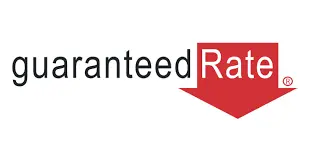- Conventional refinance loans. Fannie Mae and Freddie Mac set the guidelines for the most popular loan type: conventional loans. You’ll need at least a 620 credit score to refinance into a conventional loan, and you won’t have to pay for mortgage insurance if you have at least 20% equity in your home.
- FHA refinance loans. Homeowners with scores as low as 500 may qualify to refinance with an FHA loan. All FHA loans come with two forms of FHA mortgage insurance.
- VA refinance loans. Eligible military borrowers can refinance using a loan backed by the U.S. Department of Veterans Affairs (VA). VA borrowers can also access up to 90% of their home’s worth with a VA cash-out refinance.
- USDA refinance loans. Borrowers in rural areas who have a current USDA loan can lower their payment using a USDA rate-and-term refinance or streamlined assist refinance, but don’t have a cash-out option.
Refinance Calculator
Estimate how much you could save on your monthly payment with our mortgage refinance calculator
How to use our mortgage refinance calculator
To estimate how much you could save each month with a refinance, first you’ll need to enter some information about your current mortgage. After that, you’ll add information about the new mortgage you’d like to apply for.
Your current mortgage information
- Original amount: Start by entering how much you originally borrowed on the loan you’re refinancing.
- Loan start date: Next, add the date your current loan started. This information should be on your closing disclosure or monthly mortgage statement.
- Loan term: Select a 30- or 15-year term.
- Interest rate. Enter your current interest rate.
Your new loan information
- Loan term: Choose between a 30- or 15-year term.
- Interest rate: Choose a realistic refinance interest rate. You can base this on loan estimates you have received or current refinance rates.
- Closing costs: Our calculator automatically assumes refinance closing costs equal to 2% of your new loan amount — actual costs may range between 2% and 6% of your loan amount.
- Length of Ownership: This is how long you plan to live in your home after the refinance.
How to find your break-even point
Once you’ve entered in the information above, our refinance calculator will give you one of two results:
- “Refinance makes sense: You’ll break even before you plan on moving.” This means the refinance will pay for itself before the date you put in the “length of ownership” field.
- “Refinancing makes sense if you plan to stay for more than ___ years: You’ll not break even before you plan on moving.” This signals that your break-even point is after the date you put in the “length of ownership” field. The calculator will fill in the blank here, telling you how long you’ll need to stay in your home to start seeing significant savings after breaking even. The calculator considers one full year of savings, after you’ve broken even, to be “significant.”
 What is a break-even point?
What is a break-even point?
Your refinance break-even point is a date in the future. If you own your home through this date, you’ll have fully recouped the closing costs you paid when you refinanced. Your break-even point is when you can begin truly benefiting from the lower monthly payments that came with your refinance.
For example, if your monthly payments decrease by $200 once you refinance, but you have to pay $6,000 in closing costs, your break-even point is 30 months after closing ($6,000/$200 = 30 months). If you stay in the home for more than 30 months, you’ll save money by refinancing.
What is a mortgage refinance?
A refinance is a process that involves paying off your current mortgage and replacing it with a new home loan. The most common reason to refinance your mortgage is to lower your interest rate, which can reduce your monthly payment.
![]() Learn more about refinance mortgage requirements.
Learn more about refinance mortgage requirements.
Should I refinance my mortgage?
A refinance may make sense for you if:
- You can lower your interest rate. Besides the savings on your monthly payment, a lower rate can save you thousands of dollars in interest charges over the life of your loan.
- You want to pay off your loan faster. If you can swing the higher payment, switching from a 30-year to a 15-year mortgage means you’ll be mortgage-free much faster.
- You want to switch from an adjustable-rate mortgage (ARM) to a fixed rate. If your ARM rate is going to adjust soon, refinancing to a fixed-rate loan may give you peace of mind. It can also make budgeting easier, since you’ll know exactly what to expect each month.
- You want to tap some of your home equity. Converting some of your home equity to cash with a cash-out refinance can help you pay off credit card balances or make improvements that will increase your home’s value.
- You want to remove someone from the mortgage. If you’re going through a divorce and one party wants to remain in the house, you may need to remove the other from the mortgage. And, while it’s theoretically possible to remove someone’s name from a mortgage without refinancing, it can be complicated. In most cases, a refinance is the simplest solution.
- You want to stop paying FHA mortgage insurance. If you currently have a mortgage insured by the Federal Housing Administration (FHA), you’re on the hook for annual FHA mortgage insurance premiums. The most common way to get out of this obligation is to refinance into a conventional loan.

 How do I find the best refinance rates?
How do I find the best refinance rates?
To find the best rates for your home loan, you should shop around. Consumers who compare loan offers and choose the most competitive rate can save thousands of dollars in interest charges, according to LendingTree data.
Summary of the best refinance lenders
| Lender | LendingTree rating and "best of" category | Available features | Lender review |
|---|---|---|---|
 |  Overall refinance products | Minimum credit score: Not published Minimum down payment: 0% to 3.5% Available loan products and programs: Conventional, FHA, VA, jumbo, HELOC, interest-only and renovation loans | Read our review |
 |  Online mortgage experience for traditional bank | Minimum credit score: Not disclosed Minimum down payment: 0% to 3% Available loan products and programs: Conventional, FHA, VA, jumbo | Read our review |
 |  Rate transparency | Minimum credit score: 620 Minimum down payment: 0% to 3.5% Available loan products and programs: Conventional, FHA, VA, jumbo | Read our review |
 |  Variety of refinance products | Minimum credit score: 580 to 620 Minimum down payment: 0% to 3.5% Available loan products and programs: Conventional, FHA, VA, jumbo, HELOC, interest-only and renovation loans, reverse mortgages, physician loans | Read our review |
How to refinance my home loan
Here’s a quick overview of how to refinance a mortgage:
- Pick your financial goal. Do you want to alter your interest rate, loan term or both? Are you looking for lower payments or a faster payoff?
- Decide on a loan program. Choose a government-backed refinance loan if you need to refinance with bad credit, or a conventional loan if you have a high credit score and more than 20% equity in your home.
- Shop for a lender and lock your rate. Once you’ve reviewed loan estimates and chosen the best lender for your needs, ask your lender for a mortgage rate lock. Mortgage rates change daily and your rate isn’t guaranteed until it’s locked in.
- Gather your financial paperwork. In most cases, you’ll need to provide documentation of your income, employment and debts. This usually means current pay stubs, W-2s and bank statements. You’ll also need information about the loan you’re paying off.
- Get your home appraised. Your refinance lender will want to evaluate your home’s current value. So, unless you’re eligible for an appraisal waiver, you should spruce up your house in preparation for a home appraisal.
- Finalize your closing disclosure and enjoy your savings. Once your loan is approved, you’ll receive a closing disclosure three business days before you sign. If everything looks correct, sign your papers and you’re all done.

 What is the benefit of a streamline refinance?
What is the benefit of a streamline refinance?
“Streamline” refinances (including FHA streamline refinance loans, VA interest rate reduction refinance loans (IRRRLs) and USDA streamline assist loans) are typically much faster and simpler than other refinances. They don’t involve a new home appraisal nor a review of your credit score, income or debt.
What are some alternatives to a refinance?
If the break-even point on a refinance doesn’t work with your plans, consider one of these alternatives:
- Recast your loan. If you have a large lump sum of cash on hand, your current lender may allow you to put that money toward reducing your principal balance. They’ll then recalculate your monthly payments, which results in lower payments going forward. This process is known as recasting your mortgage and — unlike a refinance — comes with no closing costs or mountains of paperwork (although you may have to pay a small recast fee).
- Switch to biweekly payments. Most lenders offer the option to set up biweekly payments, which means paying half of your monthly mortgage payment every other week. This simple strategy has the potential to reduce your interest charges by tens of thousands of dollars and take years off your mortgage repayment timeline.
- Ask your lender to remove PMI. You may be able to get rid of your monthly private mortgage insurance (PMI) charges if your home’s value has increased enough to push your equity over the 20% threshold.
Frequently asked questions
The cost to refinance a mortgage is just what you pay in closing costs. These usually amount to about 2% to 6% of your mortgage amount.
If you just closed on your home at a high interest rate, you’re probably wondering how soon you can refinance your mortgage. If you have a conventional loan, you can refi as soon as you’d like unless you’re getting a cash-out refinance, which requires a six-month waiting period. However, if you want to refinance a government-backed loan you’ll need to wait up to a year.